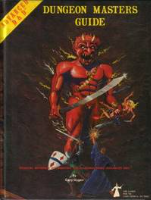wow. I went to work for a few days and I come back to find all this done. Its like R20 christmas in here! Seriously though, thats cool to see, I can't wait to test it out. I thought it would take a LITTLE longer to have it implemented to be honest. Also, I guess this means I don't need to debate this one out :P Edit: (in leu of debate, I'm just going to make another suggestion) if you have a door selected, (one thats bound to a room etc) the script can detect that, yea? why not have it bring up a locked/unlocked button that basically just toggles 'all players' tag in the controlled-by field of the token? That would be system agnostic enough to allow any kind of system to do the rolls needed to for an unlock attempt, where the GM manually unlocks the door based on the rolls he sees (its just a button for convienience, really) On that note, if you can hook into a door tokens gmnotes and detect if anything is written there, that would be great too. then a GM could write whatever he likes there, and when the door is messed with in any way, he can 'activate' the surprise, printing out whatever was in the GM notes directly to chat. a few options for formatting and putting buttons in there would be cool too (perhaps the GM has another script he wants to activate for effect - if your script presents the option to put in a manual api button for their commands it would allow people to custom add scripts that can hook into this very easily, even without a real knowledge of programming) for example: players have been moving through a dungeon, opening doors as they go, but the GM knows for a fact that when they open the next door, its going to set off a time sensitive trap, requiring initiative to be rolled, AND checks for the players to make a save throw or be caught in the initial blast (lets say a concussive blast of some kind, burning those in the radius of the effect, which sets off a cave in, making the tunnel collapse at initiative 10, trapping anyone left under it. in GM notes he could have already added a few lines to simulate this, printing to all chat the words: As the door opens, a fiery blast erupts suddenly around you, setting alight any flammables (save vs spell to negate) and doing [[2d6]] damage to those within its flames (15ft cone from the door.) immediately, you hear a deep rumbling coming from the ceiling above you... in a GM whisper, he can have already setup the button that starts the initiative script, opening combat for the group, however that is managed, and notes on what is happening: [start combat(!init)] a feiry blast weakens the roof, making a 10ft section collapse atop your players, they have until the initiative count of 10 to get out of the way.... anything of course could be written there, and much more is possible, of course. it all depends on the imagination of the GM involved. locked doors would be similar. On the subject of controlledBy, if you're going to use this method (and I really hope you do!) you would need an additional note somewhere that lets it be controlledBy all players, but doesn't trigger the open door script GMNotes: you attempt to open the door, but find it locked.... The token, instead of shifting back and toggling the door open simply places itself back, and prints ^ comment instead. GM whisper: locked door, DC 23 to open, [unlock door (!api-room)] The token will change from a locked door to an unlocked one, once the GM presses the button that activates the !api-room script again. (note: as a special usecase i would have this be a special case, so that it clicking the button opens the door directly, without a second menu being printed out: !api-room toggleLocked or somesuch) allowing the player to, on a subsequent attempt, actually open the door. of course, you'd have to write in something for the toggling of locked doors, as well as a way to detect if a door is locked without actually activating the opening of the door, if you were to add this kind of functionality (if you did not want to do that yourself, make it an optional dependency on the maplock script that is active in forums, and have it not toggle until that script unlocks the token. probably easier to add something to your own code, would fit more elegantly that way I'm sure, but I'm not a programmer). If it were up to me, I would probably put a big fat 0 in bar3, to show its unlocked, and a 1, to show its a locked door. Of course, this allows the players to see if its locked or unlocked, and possibly change it on their own. so it would probably be better to hide it in GMnotes again, in a special tag. {{locked}} or something similar, so long as its in the GMNotes somewhere. (still have it addable or removable via the script of course)








